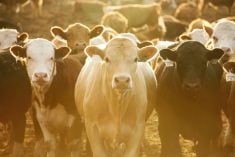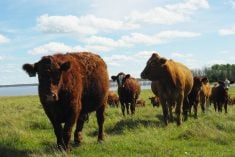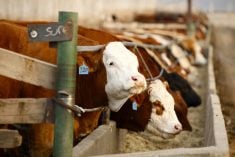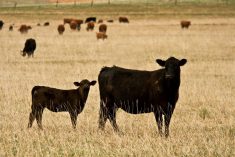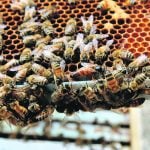Compared to last week, yearlings coming off grass traded $3-$5 higher; backgrounded yearlings were $1-$3 higher on average while calf markets were relatively unchanged.
February and April live cattle futures closed marginally lower for the week; however, fed cattle basis levels from U.S. packers are very strong for winter and spring. This appears to be the main factor underpinning the yearling market for the time being.
Grass conditions are quite variable across the Prairies. Lush pastures in central Alberta and parts of Saskatchewan have slowed weight gains; however, southern Alberta and southwestern Saskatchewan have received less than 40 per cent of normal precipitation over the past 30 days. Above-normal temperatures have caused grass to deteriorate. In any case, yearling quality is excellent and there is no shortage of buying interest. Auction barns are featuring yearling sales over the next couple weeks and buyers who were holding back on sales will likely step forward. Barley yields in southern Alberta are above average, weighing on the feed grains market.
Read Also

U.S. grains: Soy futures post biggest monthly gain in nearly five years on China trade optimism
U.S. soybean futures climbed to a 15-month high and posted their biggest monthly gain in nearly five years on Friday following a rally fueled by the prospect of revived exports to China.
In east-central Saskatchewan, Angus-blended steers weighing just over 1,000 lbs. were quoted at $183 while similar-quality heifers averaging 1,000 lbs. were valued at $172. North of Edmonton, Simmental-based steers averaging 925 lbs. reached up to $189 while similar-quality and -weight heifers were reported at $176. North of Red Deer, red steers weighing 860 lbs. were quoted at $194. These feeders are coming fresh off grass for delivery over the next 30 days. Near Lethbridge, backgrounded tan mixed steers weighing 910 lbs. were quoted at $192 and similar-quality heifers weighing 890 lbs. were quoted at $181.
The calf market was hard to define due to lower volumes. In central Alberta, mixed steers weighing 750 lbs. were valued at $207 and mixed heifers weighing 780 lbs. reportedly sold for $181. North of Calgary, a small group of mixed heifers weighing 680 lbs. were valued at $190 and 600-lb. mixed heifers were reported at $210. Mixed steers weighing 650 lbs. were valued at $210 delivered in southern Alberta.
According to Statistics Canada, the number of calves on July 1 totaled four million, down 0.4 per cent from July 1 of 2019. The number of beef cows came in at 3.6 million head, down 1.4 per cent from year-ago levels. The Canadian cattle herd remains in a contraction stage. Earlier in summer, Canadian prices were holding a premium to U.S. values but we now find prices in central Alberta and Nebraska at par. As of Aug. 8, year-to-date feeder cattle exports to the U.S. are down 50 per cent from year-ago levels.
— Jerry Klassen manages the Canadian office of Swiss-based grain trader GAP SA Grains and Produits Ltd. and is president and founder of Resilient Capital, specializing in proprietary commodity futures trading and market analysis. Jerry consults with feedlots on risk management and writes a weekly cattle market commentary. He can be reached at 204-504-8339 or via his website at ResilCapital.com.




